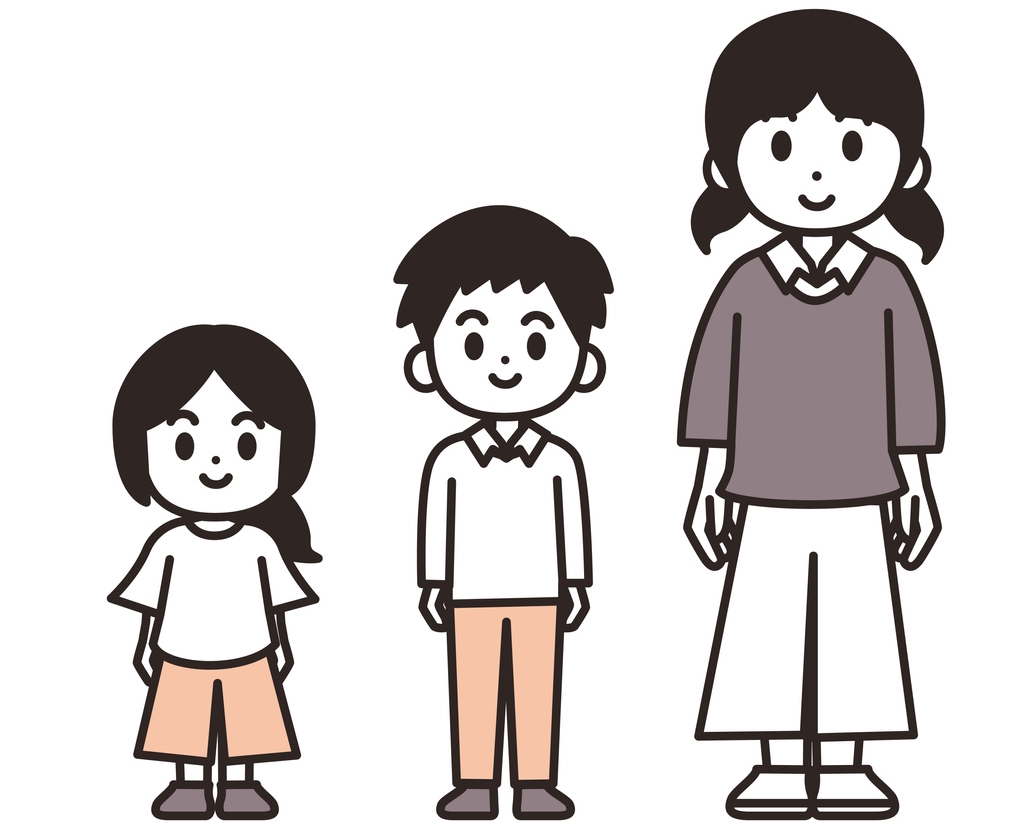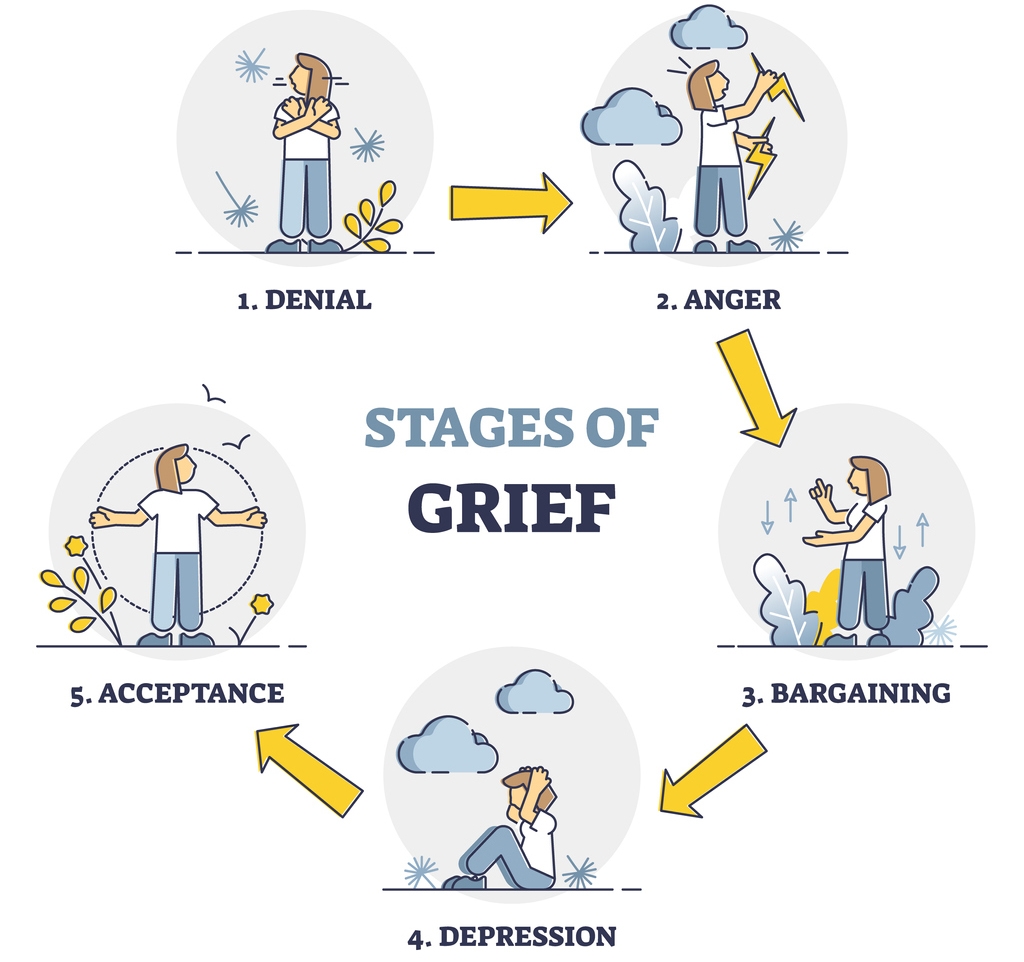Background
Psychology pertains to the scientific study of the mind and behavior. It is a complex discipline and involves many sub-fields of study, such as human development, social behavior, cognitive processes, health, and more. Whether you read psychology news frequently or perhaps occasionally, you’ve certainly come across a wide range of fascinating discoveries about human behavior, thought, and emotion.
People are constantly attempting to understand the world. We live in an era of information overload and are prone to inventing our own plausible-sounding explanations for human behavior. At the present time, with advancements in technology and the popularity of the Internet, there are several information sources, and both false and true information can be found there. These false facts can not only lead people to make erroneous assumptions about human nature, but they can also affect the day-to-day decision-making of others.

person holding a lightbulb

illustration of a brain showing the two hemispheres

a conceptual illustration of genetic brain disorder

man undergoing a lie detector test
Much of what most people know about psychology may be a lie. Over the last decades, popular psychology has resulted in the rise of many myths that have provided people a false sense of understanding about how their brains work and how the behaviors of those around them are interpreted. Therefore, to help in the goal of spreading truths instead of false facts, we’ve gathered in this post some of the popular psychology myths along with the true science behind them.
Myth #1: Men and women have completely different communication styles.
You’ve probably heard a colleague at some point complain about how difficult it is to interact with people of the other gender or comprehend what they are thinking. This myth is based on the idea that males and females are so dissimilar that they are like two distinct species. However, research indicates that men and women are not as cognitively distinct as we may believe, especially as our culture becomes more accepting of those who don’t fit into traditional gender stereotypes.
People often speak and act in ways that correspond to the gender roles that are prevalent in their surroundings, claims an essay written by the American Psychological Association. Men and women communicate extremely similarly when the gender roles associated with communication are removed. [1]
Myth #2: Most people undergo a midlife crisis.
You undoubtedly are familiar with this one if you reside in the United States. When people reach their forties, they either realize their lives aren’t turning out the way they had imagined them to, or they start to feel afraid that their youth is coming to an end. The next thing you know, they’re getting divorced, buying cool vehicles and/or motorcycles, drastically altering their careers, coloring their hair, or making other rash decisions to deal with aging.
However, only approximately 10% of people, according to studies, experience a midlife crisis. The rest of us continue to function normally into our forties and fifties. Despite the difficulties we face and the potential for conventional midlife crisis behaviors, we never lose sight of who we are. [1]
Myth #3: Personality is shaped by whether one is a firstborn, the youngest, or an only child.
According to the myth, firstborn children grow up to be independent, powerful people. The oldest siblings also develop into the most responsible members of the group as parental assistants when younger siblings arrive. In an effort to fit in, younger siblings experiment more and are less traditional and conformist than firstborns. These are some of the theories put up by psychologists that contend that where kids fall in the family pecking order has a long-lasting impact on who they become. [2]
But careful investigation reveals little to no support for these notions. A study that was released in 2019 revealed no evidence to support the idea that birth order has no bearing on one’s tendency to take risks. German psychologists examined data from thousands of individuals in the United States, the United Kingdom, and Germany in 2015 and discovered no evidence of a connection between birth order and personality qualities like agreeableness, conscientiousness, or inventiveness.
In a different study in the same year, psychologists Rodica Damian and Brent Roberts discovered relatively weak connections between personality and birth order, some of which went against earlier hypotheses (later-borns, for example, were not more agreeable than firstborns).
An IQ advantage for firstborns that may truly persist is one birth order discovery. The German researchers discovered an average gain in IQ of 1.5 points for each older birth position. Additionally, they discovered that firstborns had somewhat higher self-reported IQ scores. It’s not yet obvious why this might be. Recent research on a sample of Indonesians could not discover any correlation between birth order and intellect. Thus, even this result may not be general. [2]
Myth #4: Smiling is the secret to happiness.
The idea that if you’re having a bad day, all you need to do is to smile, and you will almost instantly become happier has gained popularity in recent years, thanks to positive psychology. It’s a great concept because if improving your mood was so simple, everyone would be joyful every day. But just as a smile won’t make our issues go away, so too can’t it make us happy when we experience unpleasant things and think that they might be bad for our mental health.
This myth promotes the notion that we should always be joyful, which is another issue, as this can actually worsen people’s feelings. Science demonstrates that faking a smile won’t help individuals feel better. [1]
However, this tale does contain a small amount of truth, like most myths do. Smiling can improve your mood if you’re just having a bad day and aren’t experiencing any clear negative emotions like sadness, anger, fear, etc. This is due to the fact that you’re not trying to force yourself to change from one intense emotion to another. Instead, you’re making the decision to move from a mostly positive state to a neutral one. The secret to success here is to smile honestly, not artificially.
If you fake a smile to hide a bad emotion, such as anger, sadness, grief, fear, etc., it will only make you feel worse. According to research, repressing emotions increases stress levels and might make you dwell on unpleasant sentiments for longer periods of time than if you embrace and express them right away. It goes without saying that not all situations are acceptable for expressing your feelings, such as work settings or other public places. In some situations, feigning happiness could be important, but do it while mentally validating your feelings to avoid the detrimental repercussions of complete suppression. [1]
Myth #5: Opposites attract and make better partners.
It is untrue that when dating, you would inevitably find yourself drawn to those that are significantly unlike you. People’s belief in the logical fallacy that we are drawn to potential partners who have opposing attributes from us because they are more intriguing and would build a balanced relationship is one of the main reasons this myth is so prevalent.
Contrary to popular belief, which is supported by a wealth of data, we are drawn to possible mates who are like us. Furthermore, since people who are similar often agree on many topics and have similar communication preferences, the similarity is a sign of successful long-term relationships. [1]
Myth #6: Venting helps overcome anger.
Hitting the punching bag at the gym, screaming into pillows, and assaulting inanimate objects are all common suggestions given by the general public to “blow off steam” or express anger. Venting is certainly satisfying, but does it actually reduce violence or just fuel it?
People who use anger “purging” tactics mistakenly believe that the act of letting their anger out has caused it to go away when, in fact, it usually passes over time. It is now recommended by psychologists to let things simmer down. When you are calm, apply critical thinking and a problem-solving technique to cope with the situation that is making you upset. Distract yourself with something completely unrelated. [3]
Myth #7: Babies can imitate your expressions.
When you smile or stick your tongue out at a newborn, they start to imitate your facial expression. Most developmental psychology textbooks include this idea, and many parents report observing this behavior in their newborns. Therefore, how could this one be incorrect if studies have shown that infants can replicate facial expressions and parents have also reported witnessing this?
This is inaccurate for several reasons, starting with how shaky the parental statistics are. When you stick your tongue out to your infant repeatedly, and they only respond once, your mind will focus on the one instance when they do so and overlook all the times they didn’t. Also, there is no evidence of an innate imitation model in the newborns because they were as likely to make the gestures in response to control expressions as they were to test expressions. [4]
Myth #8: There is a single gene for depression and other psychiatric disorders.
A person’s genetic makeup can influence how likely it is for them to develop anxiety, a major depressive episode, or an autistic spectrum diagnosis. However, there is no solid proof that any particular common genetic mutation significantly affects the risk of mental illness, according to researchers.
None of the 18 “candidate genes” for major depression, which previous research in 2019 had shown would be significantly associated with the condition, revealed any such relationships, according to a research team. The numerous genetic variations connected to each condition are weighted to establish polygenic risk scores as the architecture of complex disorders is mapped. The candidate gene myth will eventually be debunked once and for all when these predictive scores are improved and extensively used. [2]
Myth #9: People grieve in a set and predictable manner.
The popular five stages of grief include denial, anger, bargaining, depression, and acceptance. Those who are familiar with these phases may understandably believe that they serve as a guide to passing away and dying. The idea suggests that those mourning a death fight to understand it, become enraged, beg God to stop it or undo it, fall into melancholy, and eventually learn to live with the loss. [2]
Grief is not actually organized in this way. Even the psychiatrist Elisabeth Kübler-Ross, who first used the five stages to describe how terminally ill patients anticipate their own death, lamented in a later book that the stages had been “very misunderstood” and pointed out that not everyone experiences all of the stages or follows them in the same order.
People who are grieving travel on a variety of pathways. Some, undoubtedly, bounce back from loss more quickly than others. When grief-related symptoms, such as severe emotional discomfort and excruciating longing for the deceased, persist for months or years, it may be time to seek treatment. [2]
Myth #10: People have a dominant brain hemisphere.
Are you imaginative and prone to idealistic moments? Or is your thought process more methodical and deliberate? According to a widely held belief, analytical thinkers are “left-brained,” whereas intuitive thinkers are “right-brained,” with the right hemisphere predominating in their brains. [2]
Different mental processes are specialized in the right and left hemispheres. However, the idea that people favor one over the other glosses over how complicated the left-right relationship is. According to the popular left-right brain theory, the left hemisphere supports language while the right hemisphere manages perception.
However, language is distributed across the hemispheres. The left hemisphere is usually better at using grammar when creating and comprehending language, at least in right-handed people, but the right hemisphere is better at deciphering tone of voice to determine purpose. But both sides of the brain are used in perception.
The myth, which has its origins in studies with patients who had split brains, endures in part because differences are simple to understand. Although you could be left-handed, you are not left-brained. [2]
Myth #11: Dreams possess symbolic meaning.
Do you ever dream of getting your hair chopped, losing your teeth, or being beheaded? According to Sigmund Freud, castration is presumably something you’re concerned about. However, this is not true.
Approximately 43% of Americans think that dreams are unconscious desires manifested. More than half concur that dreams can reveal unspoken realities. Even while dreaming is largely still a mystery to science, it is almost probably not a predictive tool for the unconscious. The most widely accepted idea, though, goes something like this: Dreaming is the jumbled representation of our brain’s attempts to assort and piece together knowledge and experience, like a file-sorting system. [5]
Myth #12: People’s personalities stabilize when adulthood is reached.
Many people think that by the age of around twenty-five, your brain is fully matured and that, except for the consequences of catastrophic experiences, your adult personality is quite constant. We don’t like to believe that, as humans, we are essentially unstable. Therefore, one of the appeals of this myth is that many people feel they should have a clear sense of direction and be moving toward steady goals by the age of twenty-five.
However, there was a study that took personality data from 132,515 people and found that there are certain traits that change over time, even when adulthood is reached. For instance, as people age, they become more pleasant (ready to work with others), as women mature, they become less neurotic (emotionally sensitive), and with age, conscientiousness (work ethic and attention to detail) rises. The concept that our personalities fully mature in maturity is refuted by these changes, which alter our goals and behaviors as we age. [1]
Myth #13: An average person uses only 10% of their brain capacity.
Researchers compared a child prodigy’s learning prowess and accomplishments to those of the average person, who is far less intellectually engaged, in the mid-to the late 1800s, and this is when the notion first surfaced. The theory was developed in the 1900s as a result of researchers’ observations that many areas of people’s brains appeared to be inactive, leading them to believe that only approximately 10% of the brain’s total potential was being utilized.
The myth is still widely believed because people use it to justify their belief that they are not fully using their brain power since they are not pushing themselves to their intellectual boundaries and potential. According to recent studies, we constantly use all of our mental power. The fact that it occurs throughout the day and not all at once is crucial in this situation.
Every component of our brain has a specific purpose. Therefore, while the areas that regulate fundamental functions like breathing and our senses are constantly active, other areas that are in charge of tasks like the fear response, problem-solving, etc., only activate when necessary. As a result, while we all use our brains to the fullest extent possible, some people’s habits make their brains more active than others. [1]
Myth #14: Lie detector tests are accurate.
Polygraph, or “Lie Detector” tests, are frequently advertised as being 99% accurate. The truth is that no one, not even a machine, is capable of determining a person’s level of deception.
Lie detector tests operate under the presumption that physiological cues indicate when a person is lying. Indicators including skin conductance, blood pressure, and breathing are thus measured by polygraphs. In answer to a question, if these indicators surge over the test taker’s normal range, the operator deduces that a lie has been told. [5]
Myth #15: Education should be tailored to “visual learners” or “auditory learners.”
When asked, some students can respond that they like verbal lessons better than utilizing illustrations to explain a concept. However, this does not imply that using one style over another will result in the students actually learning the information more effectively. It has long been believed that teachers should adapt their lessons to each student’s unique learning preferences, which are frequently broken down into categories such as visual, aural, and kinesthetic or tactile. However, scientific evaluations have often failed to support the practice. [2]
According to a 2009 paper by University of California, San Diego psychologist Harold Pashler and colleagues, the reason why so many teachers support the learning-styles myth is that they “(correctly) notice how often one student may achieve enlightenment from an approach that seems useless for another student.”
Of course, students’ abilities vary, and how they are taught can also have an impact. For instance, certain kids can benefit from more well-organized training. What research has failed to demonstrate is that teachers are more effective with students as a whole when they differentiate their instruction to better meet the needs of students who are purportedly hands-on, auditory, or visual learners. This is as opposed to teaching all students the same lesson or one with a mix of different elements, like words and pictures.
According to Susan Gelman, a psychologist at the University of Michigan and co-author of a recent study on people’s beliefs about the concept of learning styles, “people think they themselves are limited and are not going to be able to learn in certain ways,” this myth may even make it harder for people to learn. Or, they can decide against attempting to learn a given talent because they believe it doesn’t align with how their brains function. [2]
Myth #16: Specific emotional conflicts or stress lead to ulcers.
Many psychoanalysts shared Freud’s belief that ulcers are related to an adult’s reactivation of an infant’s psychological need to be fed and dependent, which results in gastrointestinal distress. When this theory was debunked, the widespread notion that stress and lifestyle lead to ulcers took its place.
The truth is that the body develops ulcer-forming conditions when stress, emotions, and disease-causing organisms come together and not only stress itself. Studies show that both ulcer formation and treatment resistance are indirectly influenced by biopsychosocial stress. However, research is also indicating that disease-causing organisms, such as H. pylori infection, may potentially play a role in stomach ulcers. Antibiotics are used to treat ulcers just like they are for any other illness. [3]
Myth #17: Brainstorming new ideas in groups works better compared to asking people to generate ideas on their own.
Based on the widely held assumption that having numerous minds is preferable to having just one, the business world today is more eager than ever to encourage cooperation. It’s a misconception that groups can create more and better ideas than lone people, even while it’s true that we all gain from receiving criticism and learning from one another.
According to various research institutions, including the American Institute of Graphic Arts, there are three aspects of group brainstorming sessions that restrict innovation. One is anchoring, which causes people to struggle to consider other options once others are anchored on the one that they like. Another one is groupthink, which strengthens anchoring. It is peer pressure that causes members of a group to think the same way, preventing new ideas from being heard or spoken aloud. There is also the pressure of having to come up with good ideas on the spot while surrounded by other people, which limits the ability of a person to think creatively. [1]
Instead of doing a team brainstorm, allowing people to discuss one-on-one or in small groups can help generate as many original ideas as they can. Then, they can share their ideas with the group for feedback.
Myth #18: The most effective method of memorizing information is repetition.
A lot of people believe that they can easily memorize lessons by repeating the information over and over again. However, this is wrong. The truth is that information that is processed according to its significance rather than being repeatedly repeated is more likely to be remembered. Therefore, if you want to ace your upcoming tests, make sure that you understand what you are reading instead of repeating them over and over to memorize them. [3]
Myth #19: Playing “hard to get” is a good way to get someone interested in you romantically.
For women, it is common advice to play “hard to get” when a guy is courting them. However, this doesn’t always work. It’s because, according to research, men are more likely to be interested in women who are open to their advances than in women who are “standoffish” or aloof. [3]
Myth #20: Creative breakthroughs happen in unexpected spurts of insight.
Based on brain imaging studies, even before people suddenly give a creative answer to a problem, the areas in the brain that are involved in problem-solving, such as the frontal lobes, have already been active. This means that it is not true that creative breakthroughs happen in sudden bursts of insight.
Conclusion
These are some of the popular psychology myths and the true science behind them. Many people still believe in these myths, as some of them are backed by research, too. However, most of those are outdated research that was debunked many years ago. That is why it is very important to always check your sources when gathering information to make sure that you are getting the right data. We hope this post helped you learn more about the truths behind the popular psychology myths.
References
[1] Edwards, V. V. (2021, October 25). 10 surprising pop psychology myths and the true science behind them. Science of People. Retrieved August 17, 2022, from https://www.scienceofpeople.com/myths-pop-psychology/
[2] Huston, M. (2019, August 20). 10 myths about the mind. Psychology Today. Retrieved August 17, 2022, from https://www.psychologytoday.com/us/articles/201908/10-myths-about-the-mind
[3] Singhal, S. (2016, January 28). 11 Popular Psychology ‘Facts’ You Believe (That Are Actually Myths). YourDOST Blog. Retrieved August 17, 2022, from https://yourdost.com/blog/2016/01/11-popular-psychology-myths-debunked.html
[4] Eliason, N. (2020, December 1). 16 popular psychology myths you probably still believe. Nat Eliason. Retrieved August 17, 2022, from https://www.nateliason.com/blog/psychology-myths
[5] Business Insider, E. (2014, April 7). These are the 10 biggest myths in psychology. Business Insider. Retrieved August 17, 2022, from https://www.businessinsider.com/these-are-the-10-biggest-myths-in-psychology-2014-4


















